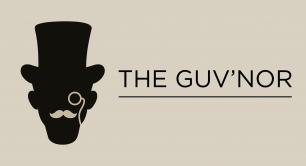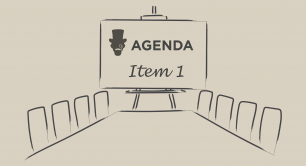Venn and the art of avoiding a parallel governance universe
Boards and management teams can easily find themselves either stepping on each other's toes – or, conversely, functioning in parallel universes. So how do you find the perfect balance? Top tips on achieving a Venn-like state from Patrick Dunne – a serial social entrepreneur, chair of the EY foundation and the author of a new book on governance.
For growing social enterprises, success can depend on having the right board in place for each phase of growth, and getting the right relationship between board and executive team. Yet for many social entrepreneurs it can sometimes feel like you are sitting at either end of the spectrum below.
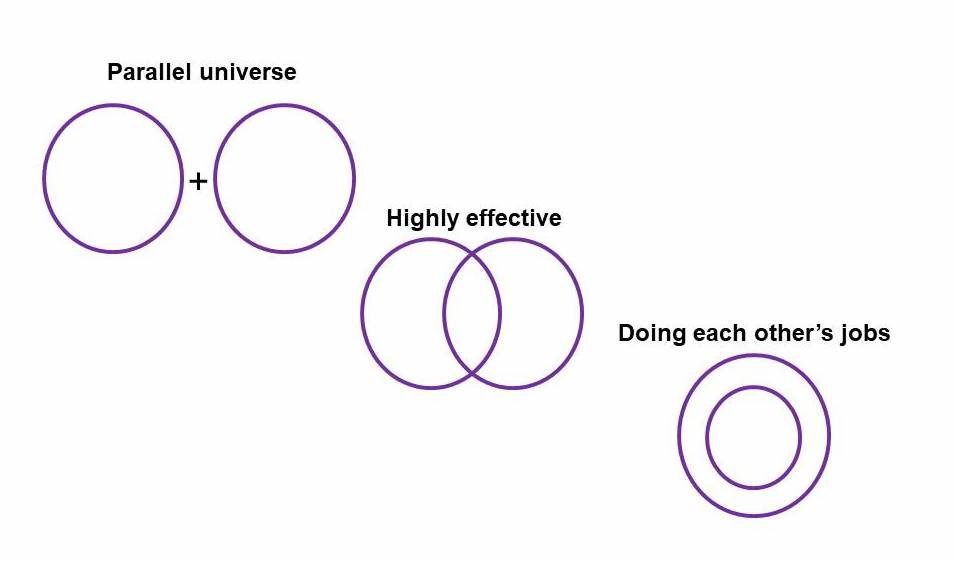
Above: A Venn diagram shows the optimum alignment of board and executive team. Incidentally, John Venn, the legendary mathematician and philosopher, was also a pioneering social entrepreneur who did much to improve housing and conditions of the poor in the late 1800s.
In a ‘parallel universe’ situation, the executive sees the board as something to get through: give the presentation, tolerate a few questions and then head off to do exactly what you were going to do anyway. Here, the non-executives or trustees might see their role as simply a ‘policing’ one providing oversight and ensuring that they keep a distance. It can all feel very ‘Us’ and ‘Them’. Respect and trust are low. You can hear it loud and clear in any conversations you have with execs about non-execs. The ‘They’ count is so much higher than the ‘We’ count and the executive often fall into using victim language.
In a ‘parallel universe’ situation, the trustees might see their role as simply a ‘policing’ one providing oversight and ensuring that they keep a distance. It can all feel very ‘Us’ and ‘Them’
At the other end of the spectrum – despite what may be written down in well-crafted terms of reference – the reality is that the roles of the board and the executive are so intertwined that they are effectively doing each other’s jobs.
On highly effective boards, however, execs and non-execs or trustees seem to be able to achieve much greater clarity of purpose about their own roles and what they do together, as well as having an appropriately-sized intersection of activity. What goes in the intersection varies by stage of development both of the organisation and the board and executive, and therefore changes over time.
The reality is these are not entirely discrete states; we tend to operate across the spectrum and even those that are very good will have occasional lapses into marginal dysfunction. The key is to talk about it and to work at it.
How do you end up in the wrong place?
Common causes of dysfunction are lack of clarity on the role of board and exec, lack of alignment on key issues such as the vision, strategy and rate of growth, or simply having the wrong people or chemistry. It can also be because board members are putting themselves under too much pressure. There’s a relationship between effectiveness and pressure along a spectrum from asleep, to dynamic but well-controlled, to headless chicken (as below). Too many meetings, packed agendas and poorly-written papers can all contribute to the latter.
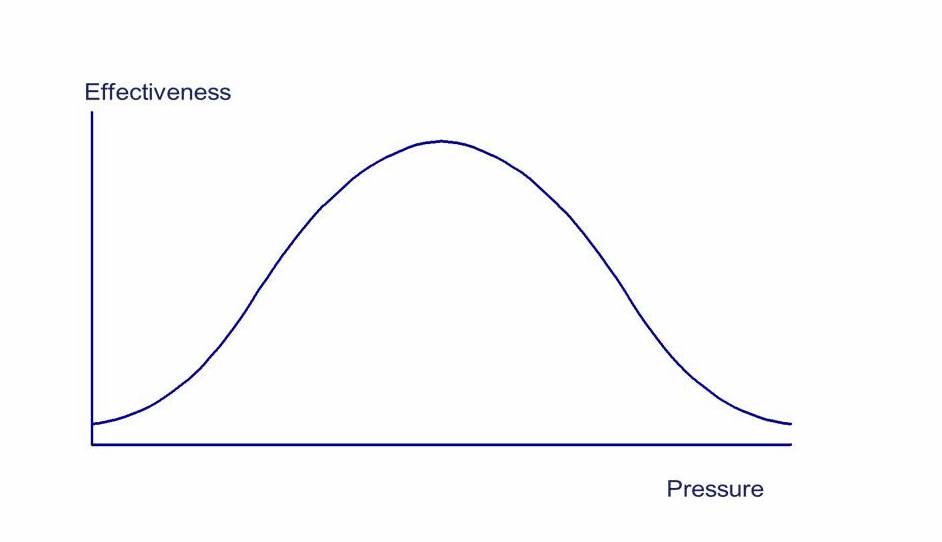
When it comes to alignment, getting yourself in the triangular position below makes things a lot easier. The circular rabble and the monarchist or autocratic straight line almost always ends in tears. If the board and the exec are all pointing in the same direction but have enough different perspectives and a healthy degree of restlessness and challenge then success is far more likely. Mathew Syed’s book, Rebel Ideas, about the real power of diversity of thought is well worth a read on this topic.
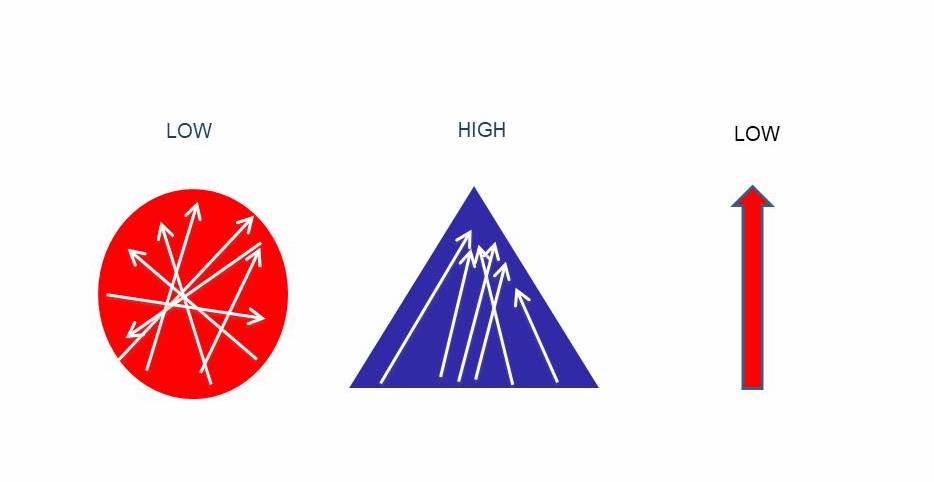
Building better relationships
All easy to say and to get your head around – but how do you make it happen in practice?
First, make sure everyone is clear on the role of the board and the role of the executive, and just as importantly, what you are going to do in the intersection. For me, the role of the board is to ensure that you have the right vision and strategy and the right resources and governance to turn that vision and strategy into a successful reality. The role of the management team is to develop the business plan (with input from others, including the board), to deliver the business plan and to maintain financial and operational integrity.
So, what goes in the intersection? Usually the big stuff: for example, strategy, deals and partnerships, fundraising, big hires, the culture you want to build and so on.
If you have clarity of purpose and roles, it’s then much easier to recruit and to get the right people working together in right way. Don’t build your board too quickly; take it step by step. Find yourself a good chair right from the start who knows how to help you build a board, and who knows how to get that balance right between mucking in and standing back and taking the strategic view. This is especially important at the start and in the early growth phase, but also matters once the right people are in place so that they can morph their role as you grow and build out the board and team.
Don’t build your board too quickly; take it step by step
When we were founding ESSA and the EY Foundation we spent a reasonable amount of time making sure that everyone in the team knew what the board was for, and how it fitted with what they were going to do. We also set ourselves goals for how we wanted it to feel at the end of the first year and then reviewed it. This created a culture where not only do we think about how we have worked together to get better, but also about how we will need to change for the next phase of growth.
Rarely will you get everything right. So, if you make a mistake acknowledge it, learn from it and deal with it swiftly. Don’t let it fester and slow you up in your primary purpose of maximising impact and ‘bangs per buck’.
Boards and management teams are always in transition. Those running social enterprises need to always be thinking and talking about the next step, and how the board and the executive can stay in that ideal, Venn-like state.
Patrick Dunne's book, Boards, is out now.
Thanks for reading our stories. As somebody working in the impact economy, you'll know that producing quality work doesn't come free. We rely on paid subscriptions and partnerships to sustain our purpose-led journalism – so if you think it's worth having an independent, specialist media platform to share your news, insight and debate across the globe, please consider subscribing. You'll also be buying social: Pioneers Post is a social enterprise itself, reinvesting all profits to help you do good business, better.


